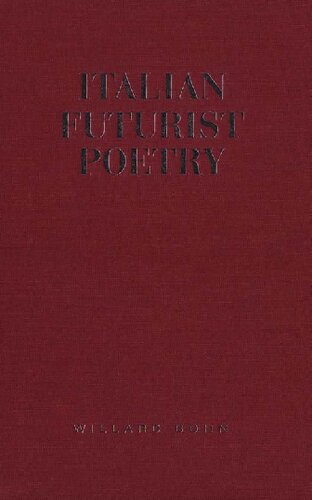

Most ebook files are in PDF format, so you can easily read them using various software such as Foxit Reader or directly on the Google Chrome browser.
Some ebook files are released by publishers in other formats such as .awz, .mobi, .epub, .fb2, etc. You may need to install specific software to read these formats on mobile/PC, such as Calibre.
Please read the tutorial at this link: https://ebookbell.com/faq
We offer FREE conversion to the popular formats you request; however, this may take some time. Therefore, right after payment, please email us, and we will try to provide the service as quickly as possible.
For some exceptional file formats or broken links (if any), please refrain from opening any disputes. Instead, email us first, and we will try to assist within a maximum of 6 hours.
EbookBell Team

4.4
22 reviewsFounded by F.T. Marinetti in 1909, Italian Futurism was the first major avant-garde movement of the twentieth century. It was also one of the longest lasting, having continued as long as Marinetti and his colleagues remained active until 1944. Despite the provocative manifestos and outrageous public performances that earned its members international fame, their remarkable poetic achievements have received little post-war scholarly attention. This anthology, by the widely recognized Italian Futurist scholar Willard Bohn, seeks to correct this oversight.
It is commonly believed that Futurist poetry rarely strayed from three main subjects: modern machinery, warfare, and the Fascist dream. Bohn demonstrates that, in reality, it was much more diverse. Although military, mechanical, and patriotic themes occur in a number of poems, including some in this volume, the Futurist repertoire was actually much larger. Ranging from Symbolist exercises to radical experiments worthy of Dada or Surrealism, it was also surprisingly creative.
Italian Futurist Poetry contains more than 100 poems (both Italian and English versions) by sixty-one poets from across Italy. Arranged in roughly chronological order, the anthology reflects numerous aesthetic, historical, and cultural developments. It is a major contribution to the understanding of modern Italian culture and, indeed, of twentieth-century avant-garde literature in general.